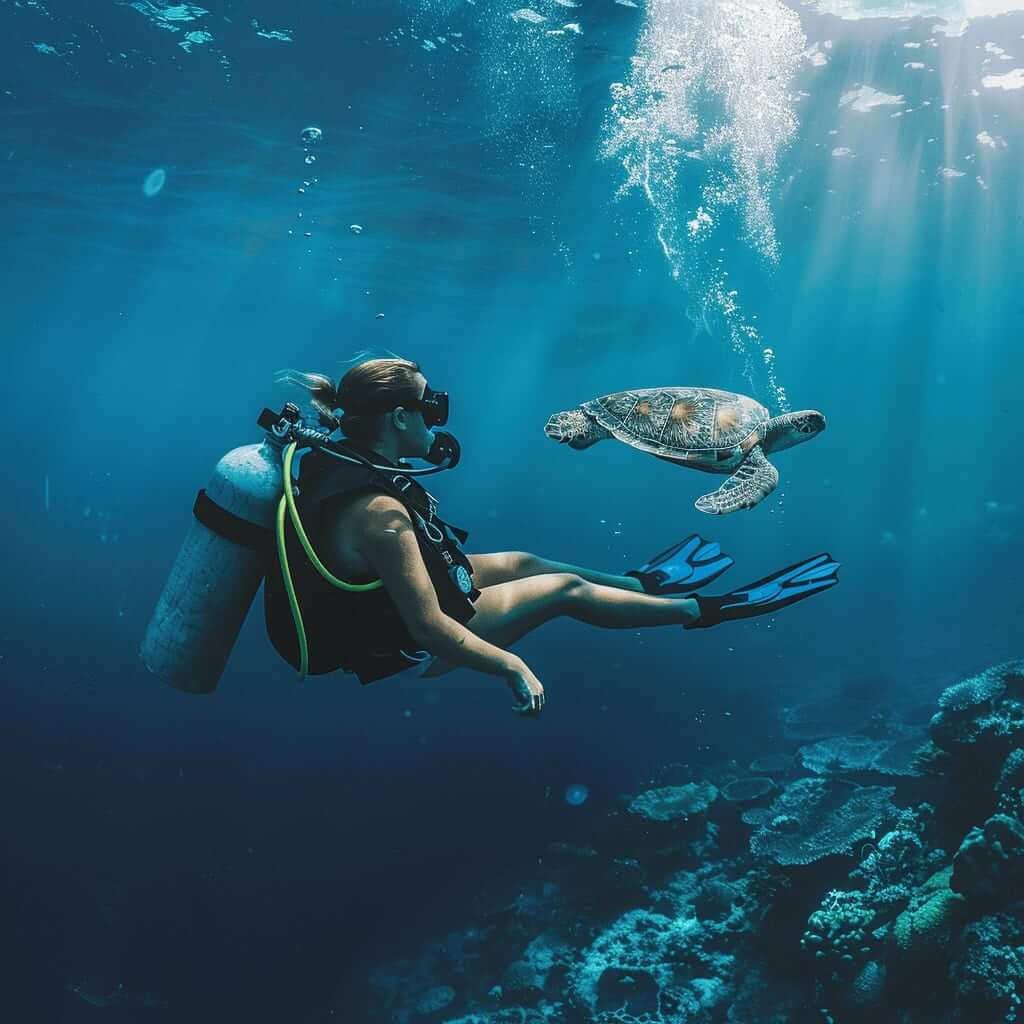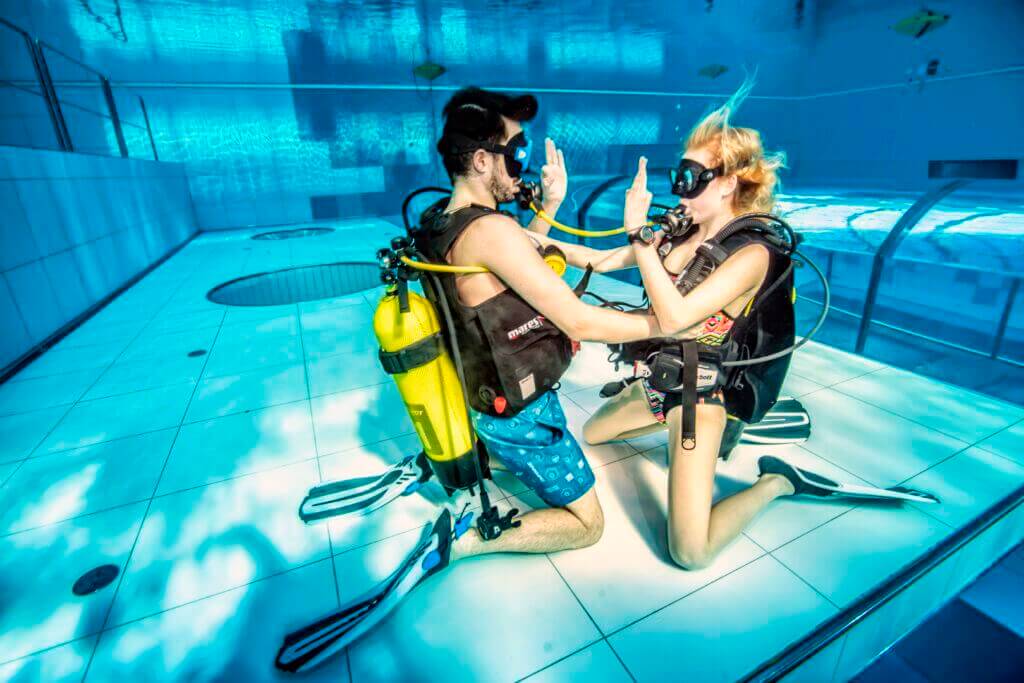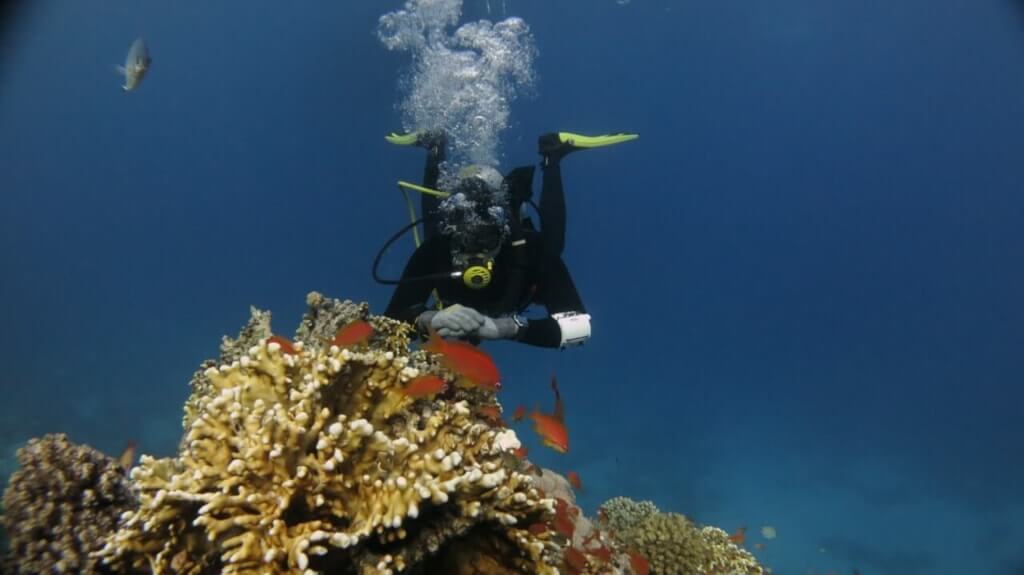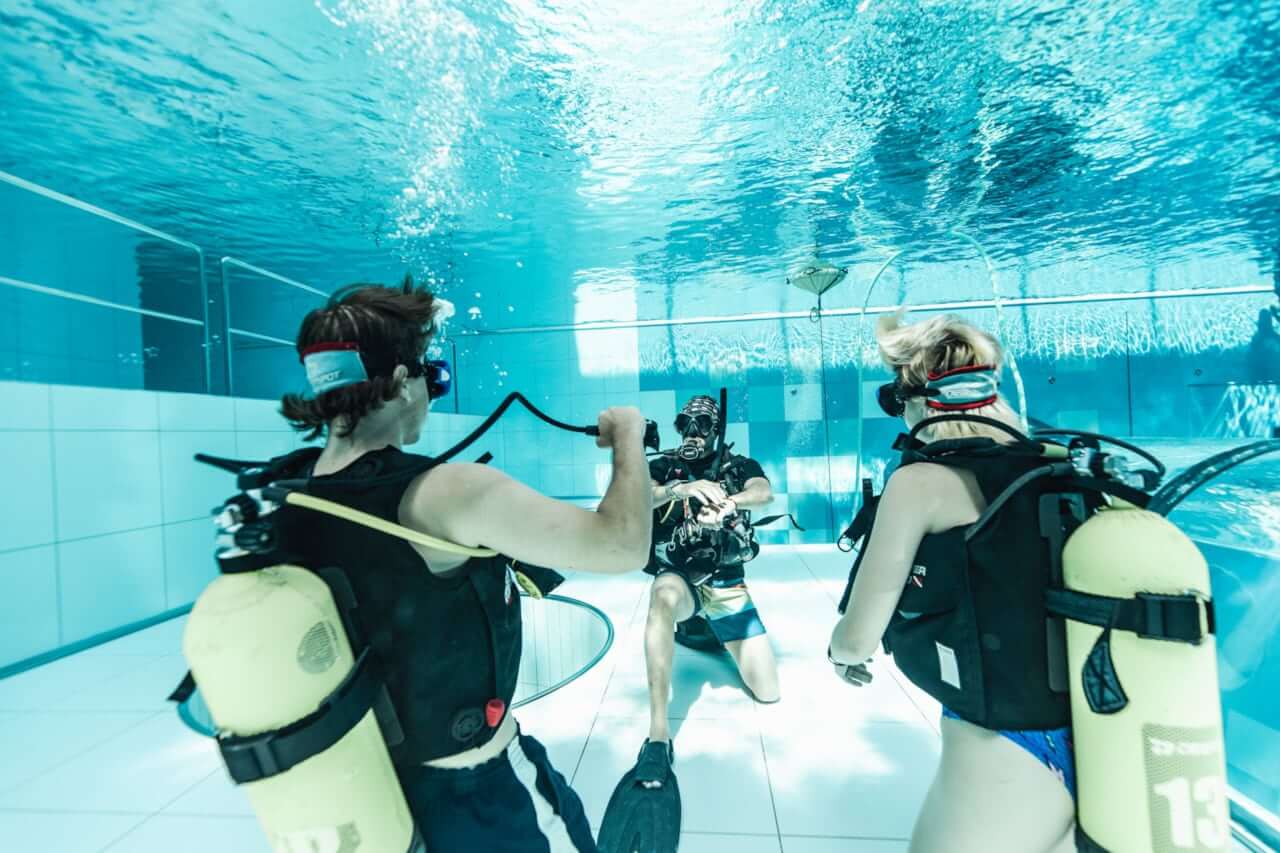Basic information about Refresh dive course
- For 10 years.
- Minimum degree of participants – basic degree
- 4 participants per instructor, but most often the group is two people.
How did the Refresh course make my diving after a long break extremely successful?
Finally, after a few hours of flight and transfer, we are at the port. At the berth there is a beautiful dive boat on which the lights on the diving deck stand cylinders, prepared just for us. On the side on hangers hang wetsuits, jackets. Next to it on the racks are waiting automatics. We arrived and the first thing we hear from the boat’s chief is “choose your equipment, prepare it on the dive cylinders so that it is clear that everyone has everything, as long as we are standing in the harbor. Tomorrow, when we sail away, it will no longer be easy to change equipment, get another size of something ready.” This is the moment when a diver feels that it is good to be able to efficiently select and prepare equipment and be sure that nothing has been forgotten.
I feel that the Refresh diving skills refresher course at Deepspot was worth the time spent……..
When diving on a beautiful reef, you are happily swimming through the water, and wanting to slightly increase or decrease the depth you simply sink down a little or float up correcting all this with your breath. You breathe calmly generally it is nice and pleasant so the air consumption is also not large. You feel confident and safe. At the end of the dive you have more air than the other divers.

What can diving look like if skills are not refreshed?
Poorly chosen equipment flies on the back. All the while you’re thinking what will happen if a little water gets into the mask. You are constantly flying up and down. As you fly down you give air to the jacket and at that moment it pulls you up. When it throws you off and you try to violently let the air out of the jacket you fly down. The thought that the mask may have been leaking inspires horror. In the whole group, you consume air the fastest. This is not a pleasant feeling.
The difference between scenarios one and two is that the diver from the description of the first one recently did a refresher. He refreshed his skills before the trip and is now diving quietly. The diver in the second story has had a longer break from diving, didn’t find time before the trip to refresh his skills and is now getting tired, and the pleasure of great dives has disappeared somewhere. In addition, it is always good to think about small air consumption workshops.
After a long break, how long is it worth taking the Refresh course?
Every diver has a break from diving every now and then. If this break is a few weeks, it is not a problem, but if this break in diving lasts six months, a year and especially when it concerns a diver who is after the basic course or has few/no dives done at all in his history, already a six-month break causes one to forget basic procedures and skills, and it is for such people that the Refresh program is prepared in Deepspot. The Refresh program is for people who have not dived six months or more and want to refresh their knowledge, procedures and skills. Also, if you are a more experienced diver but your break in diving was longer, it is a good idea to do such a refresher before you leave. It will simply be more enjoyable later on in the trip. The depth of such Refresh program depends on the credentials of the person , it also depends to a degree on the credentials of those who will be in the diving group. In a group of up to four people, there can be, for example, people with an OWD degree and with an AOWDA degree of the most popular organizations, namely PADI and SSI. In such a situation, the depth will be adjusted to the person with the lowest privileges in the group, that is, up to 18 meters. However, depth is not the goal of this program and does not affect the quality of refreshed skills such as buoyancy or mask.
Who can attend the diving skills refresher course?
The minimum age of participants in the program is 10 years, and here we especially want to sensitize parents who want to go on some diving trip with their kids, that doing such a refresher before the trip will clearly increase both safety and enjoyment of later dives. Both the pleasure of the kids and yours because you may have to keep your eyes around your head a little less and worry a little less about your diving children accompanying you on the dive.

Refresh dive course
Lecture
The beginning of such a program is a lecture by an instructor. Discussing what will be in the water, going over basic exercises and procedures and then something that is very important, which is a reminder of preparation, selection and assembly of equipment. Assembling equipment is one of those skills that if one has only done a few times in life (on one’s basic course) and on a few dives later is easily forgotten. Therefore, a reminder of how to properly complete and assemble the equipment including such procedures as that the valve is unscrewed all the way, check all the equipment, fix the pressure gauge and octopus in the right way so that they do not sag later. In Deepspot, jackets have specially prepared mounts for this equipment and it is worth learning how to use them.
The pre-dive lecture is firstly to discuss the basic, most important rules related to diving, that is; that we constantly breathe; that if we needed to ascend rapidly we should exhale. Partner procedures, signaling, especially that related to questions and determining how much air you have in the cylinder, are also discussed. The instructor answers any questions of program participants Dispels their doubts and reminds them of information that seems not fully clear to them.
That is, skills or procedures such as:
- Breathe steadily – never hold your breath.
- Always emerge slowly – check your speed on the computer and always perform a safety stop.
- Stay close to your partner – never dive alone.
- Frequently equalize ear pressure.
Assembling the equipment
Then comes an often underestimated element – selecting the right size equipment from the hangers. Often divers have a lot of doubts here, so walking with the instructor along the hangers with the large selection of equipment that is Deepspot allows you to choose the right equipment as to size. Divers then assemble the equipment on their own, assisted by an instructor who prompts the proper procedures.
Entering the water
The equipment is put in the water with an inflatable jacket or wing so that it floats and then the participants enter the water and, according to the procedures in Despot, dress the equipment in the water. Dressing is followed by an inspection of the equipment in pairs with particular attention to whether the valves are open all the way and whether the octopus already in the water is feeding air properly and not adding some water, which can happen if the exhaust valves are damaged.
Exercises
When learning to dive, we can repeat buoyancy, buoyancy, buoyancy. Just as a sense of balance is the basis for walking, running, moving around the planet so buoyancy is the basis for moving underwater. Repeating to yourself mask, mask, mask, is also useful but about that in a moment.
Buoyancy
Buoyancy, or the ability to feel whether we are simply floating in the depths, the water pushing us slightly upward or sinking downward. The buoyancy of a diver is affected by the weight of the equipment and the amount of air in the Jacket/wing and in our lungs. At first, the breath that changes our buoyancy disturbs us a little – it kind of knocks us out of rhythm. After a while, breathing is a great help. We are simply able to breathe without thinking about it to maintain proper buoyancy. The right one means the one we want to have at any given time.
Mask
Just as buoyancy makes it possible to move efficiently underwater, the ability to clear the mask from the water means that we have no worries about what will happen underwater. Diving is simply enjoyable. It’s also safer because not being able to clear the mask of water can involve some risk. But the primary advantage of mastering this exercise well is that you begin to feel because you are confident under that water. Diving is simply enjoyable.
If our memories of the basic course tell us “oh that’s a terrible mask exercise” then we are not alone in this, but it also means that we should have just practiced emptying the mask from the water a few more times, because this is an exercise for us. We are the ones who are supposed to be convinced that we will do it without any problems and there is nothing not only difficult or unpleasant about it.
Finding the Automat
The technique of finding the automaton by moving our right hand along the body and outward, thus finding the automaton. This is helped by leaning slightly to the right so that the wires of the automatic machine move away from the body. This technique comes in handy most often to find the octopus that we unhooked, but also at the beginning of each dive before diving we need to find the main automatic and this technique also comes in very handy. Of course, in the event that for some reason we lost the vending machine from the mouth (which is hard to imagine), this way we will also find the machine very efficiently.
Octopus
Such exercises from the basic course as breathing from a partner’s octopus are also repeated during the skills refresher. It is a very rare situation when we or our partner is airless underwater and will ask us for air, but it is good to practice it to be calmer underwater and know that we can handle such a situation without any problems. Therefore, practicing the ascent on your partner’s octopus is an important part of remembering basic procedures.
Refresh program allows you to consolidate your diving skills
The Refresh program is not a diving study. We knew all these skills before, so when we do them again, we not only perform them more efficiently and quickly, but they also become fixed for much longer. Each such reminder means that we don’t have a problem with a particular skill or procedure for a long time. Besides, when we go on a diving trip and properly prepare, assemble and dress our equipment, dive calmly follow proper procedures underwater as well, then each subsequent dive and each subsequent diving trip will simply be more enjoyable.
When is it a good idea to take a Refresh diving skills refresher course?
If after a few years of diving we simply want to become a good diver, it is important to intertwine gaining experience, i.e. diving, diving trips, with learning to dive. Here the huge role of just the Refresh program both before the trips and when we plan any further training. The course should teach us new things and not remind us of what came before. That’s why it’s ideal to also do a refresher before each training, because then the instructor during the training will be able to focus on teaching us new things and not on catching up on the old ones at the same time. If during training we have to learn something we should know then we are not learning new skills and such a course is less valuable. That’s why it’s a good idea to plan yourself a Refresh program both after an extended diving break before diving trips and regardless of the break before each subsequent course.












